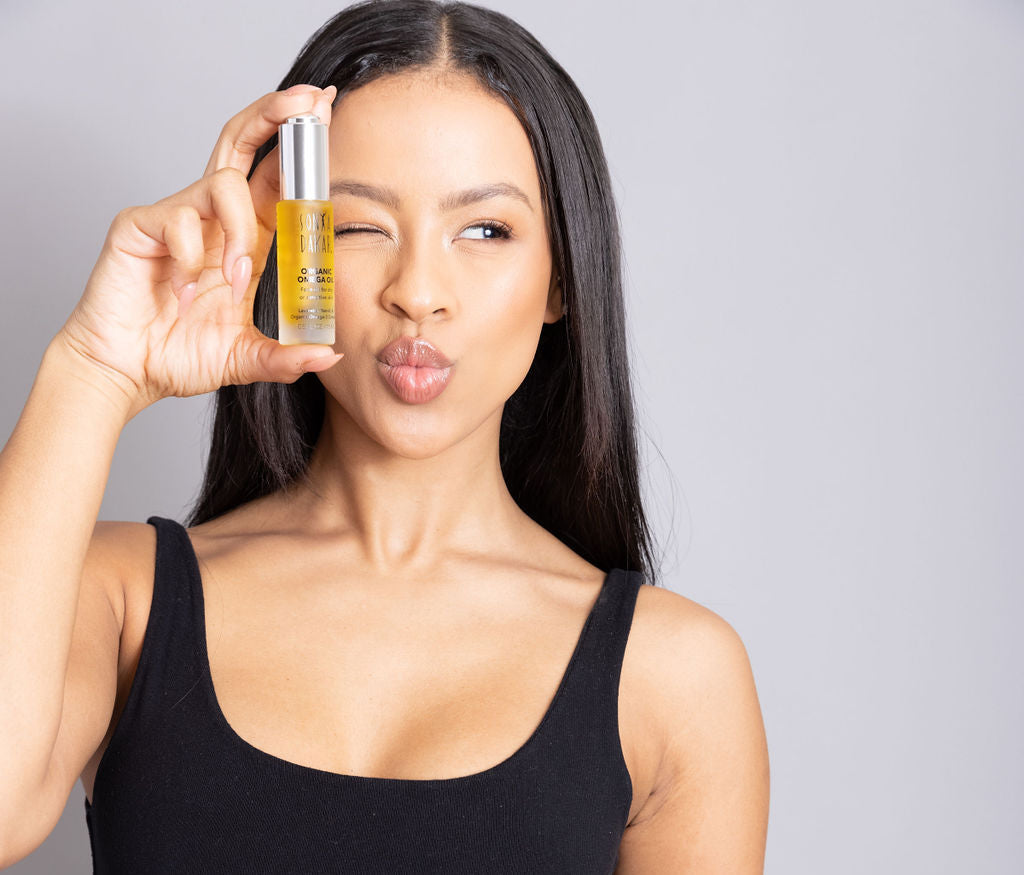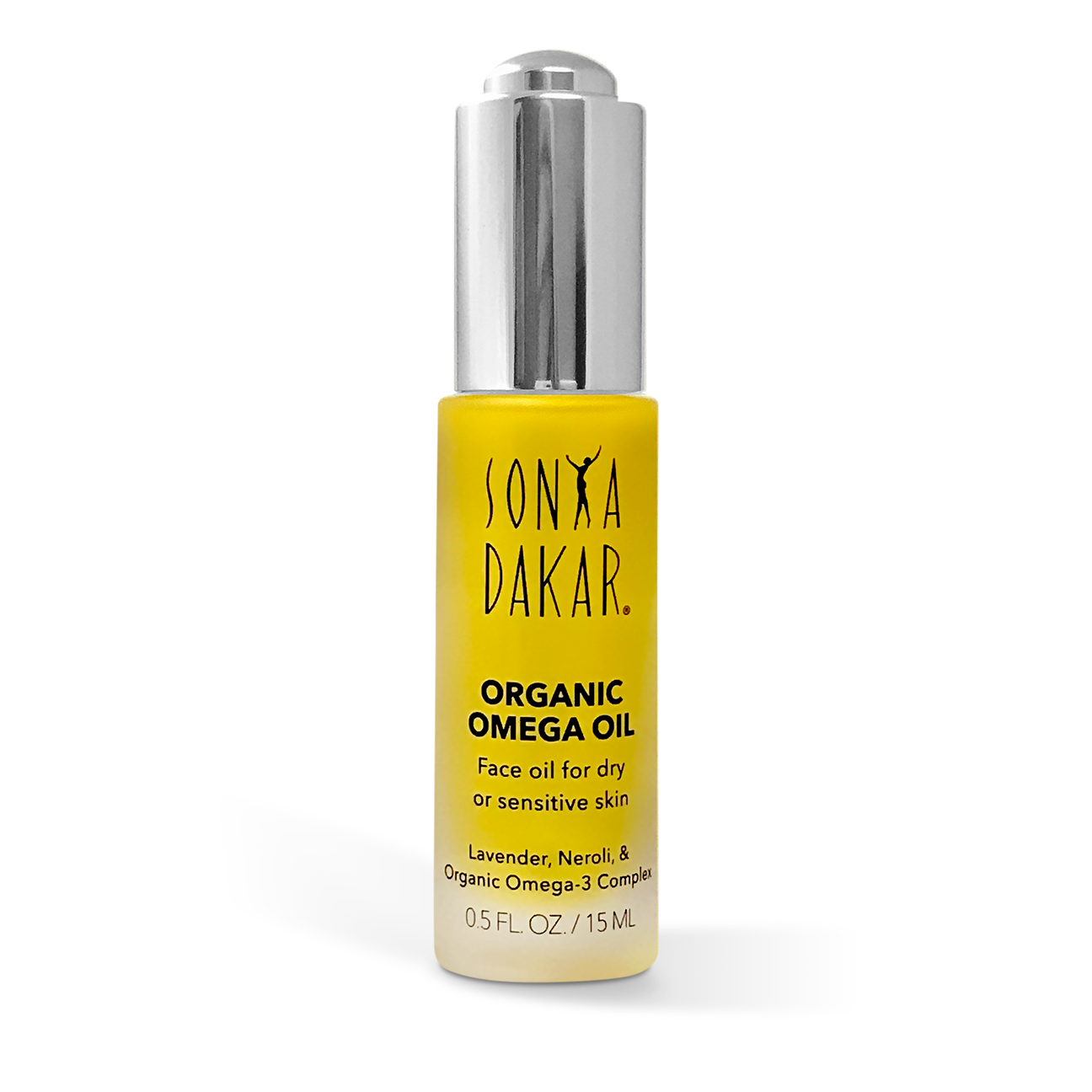
The Ultimate Guide to Choosing The Best Face Oil
By now you've seen face oils in every store and beauty video, and you may have even tried some. But you’re still not sure what it does or how to choose the best facial oil for your skin type. You’re not alone. Ever since Sonya Dakar introduced the original face oil in 1982, the face oil category has exploded with countless options. This article will highlight the benefits using face oils, how to choose the best face oil for your skin condition and how to get the most of your face oil.
What is a face oil and what are its benefits?
Face oil is a product that is applied to the skin to provide hydration and nourishment. Face oils are made of a variety of natural plant-based ingredients, such as carrier oils (e.g. flaxseed oil, rosehip oil, marula oil, grapeseed oil) and essential oils (e.g. lavender oil, chamomile oil, tea tree oil, frankincense oil). These oils are rich in fatty acids, vitamins, and antioxidants that can help improve the texture and appearance of the skin.

Some of the benefits of using face oil include:
- Moisturization: Face oil can help to provide hydration to the skin, which is especially important for those with dry or dehydrated skin. The oils help to lock in moisture, preventing the skin from becoming dry and flaky.
- Nourishment: The vitamins and antioxidants in face oils can help to nourish the skin, improving its overall health and appearance. These ingredients can also help to protect the skin from damage caused by environmental stressors such as pollution and UV radiation.
- Anti-aging: Many face oils contain ingredients that are known to help reduce the appearance of fine lines and wrinkles.
- Calming: Some face oils contain ingredients that are known for their calming and soothing properties. For example, lavender oil and chamomile oil can help to soothe irritated skin and reduce redness
So is a face oil the same as a moisturizer?
Face oil and moisturizer are not the same, but they both serve the purpose of hydrating and nourishing the skin.

Moisturizers are typically formulated with a combination of water and oil to provide both hydration and moisture to the skin. They usually contain emollients that soften and soothe the skin, humectants that help to attract and retain moisture, and occlusives that help to seal in moisture and prevent water loss. (check out our complete list of moisturizers.)
On the other hand, face oils are typically made up of natural plant-based oils that are rich in fatty acids such as Omega 3, 6 and 9, vitamins, and antioxidants. They can help to provide a deep level of hydration and nourishment to the skin, but they don't contain water and therefore are not hydrating in the same way that a moisturizer is.
Is Omega 3 good for the skin?
- Organic Omega Oil is rich in Omega-3 fatty acids which are a type of polyunsaturated fat that are important for overall health and wellbeing, including skin health. They are essential nutrients, meaning that our bodies cannot produce them on their own and they must be obtained through diet or supplementation.
- A 2020 study published in the Journal of the American Academy of Dermatology found that dietary supplementation with omega-3s improved skin hydration and reduced l water loss in people with dry skin. The study participants showed significant improvement in skin hydration and reduction in water loss through the skin.
- Omega-3s play a crucial role in maintaining the integrity of the skin barrier, which helps to prevent moisture loss and protects the skin from environmental stressors. The skin barrier is made up of skin cells, lipids, and other natural substances that work together to maintain hydration and protect the skin from damage. Omega-3s help to keep the skin barrier strong and intact, reducing the risk of dryness, irritation, and inflammation.
- Omega-3s also have anti-inflammatory properties that can help to reduce redness and irritation in the skin. They may be particularly beneficial for those with inflammatory skin conditions such as acne, eczema, or psoriasis.
- In addition to their effects on the skin barrier and inflammation, omega-3s may also help to promote healthy skin aging. They can help to reduce the appearance of fine lines and wrinkles by promoting collagen production, which is essential for maintaining skin elasticity and firmness.
How to Choose the Best Face Oil for Your Skin
When choosing a face oil, there are several factors to consider to ensure that you are selecting a product that will work well for your skin type and concerns. Here are some factors to keep in mind:
- Skin type: Consider your skin type and any specific concerns you have, such as dryness, oiliness, sensitivity, or acne-prone skin. Look for face oils that are specifically formulated for your skin type, as this can help to ensure that the product provides the right level of hydration and nourishment without causing irritation or breakouts. Organic Omega Oil is available in 3 formulas. dry/sensitive, oily/combination and Hoya (detoxifying).
- Ingredients: Pay attention to the ingredients in the face oil and look for natural, plant-based ingredients that are known to be beneficial for the skin. Common carrier oils include flaxseed oil, rosehip oil, marula oil, and grapeseed oil, while common essential oils include lavender, chamomile, tea tree, and frankincense. Look for products that are free from potentially harmful ingredients like synthetic fragrances, preservatives, or mineral oil.
- Quality: Look for high-quality face oils that are made with pure, unadulterated ingredients. Choose oils that are cold-pressed or expeller-pressed, as this can help to preserve the nutrient content and ensure that the oil is free from harmful solvents or chemicals.
How to Use Face Oil in Your Skincare Routine
To get the most out of your face oil, there are several tips and techniques that you can use to optimize its benefits. Here are some suggestions:
- Apply face oil to damp skin: Apply your face oil to skin that is slightly damp, either after cleansing or after applying a hydrating toner mist. This can help to lock in moisture and improve absorption of the oil into the skin.
- Use a gentle facial massage: Take a few minutes to massage the face oil into your skin using gentle, circular motions. This can help to improve circulation, reduce puffiness, and increase the absorption of the oil into the skin. You can also use a facial roller or gua sha tool to enhance the massage and promote lymphatic drainage.
- Mix with other products: Face oil can be mixed with other skincare products to enhance their benefits. For example, you can mix a few drops of face oil into your moisturizer or serum to provide additional hydration and nourishment.
- Choose the right amount: Use the right amount of face oil for your skin type. For dry or dehydrated skin, use a few drops and increase as needed. For oily skin, use a lighter oil and use a smaller amount to avoid over-hydrating the skin.
- Use regularly: To see the full benefits of face oil, use it regularly as part of your daily skincare routine. Consistent use can help to improve skin hydration, texture, and overall appearance over time.
- Store properly: Store your face oil in a cool, dry place away from direct sunlight. This can help to maintain the quality of the oil and prevent it from going rancid.
Overall, face oil is an essential step to a skincare routine for those looking to hydrate, nourish, and improve the appearance of their skin. By incorporating face oil into your skincare routine can provide a variety of benefits for your skin. By using the right techniques and practices, you can optimize its benefits and get the most out of this nourishing and hydrating product.




